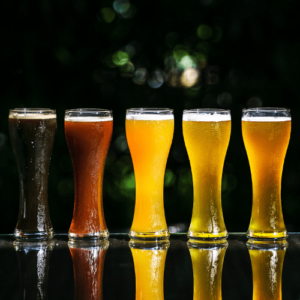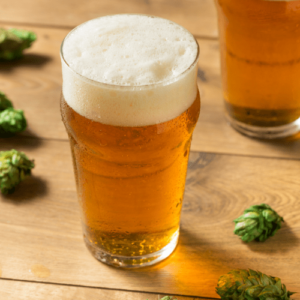When it comes to dark beers, two of the most popular styles are porter and stout. While these two styles are often used interchangeably, they are actually distinct styles with unique characteristics. In this article, we will explore the differences between porter and stout beers.
History and Origins:
Porter and stout both have their roots in England, but their histories are quite different. Porter was first brewed in London in the early 18th century and was named after the porters who transported goods around the city. The beer quickly became popular among the working class due to its affordable price and high alcohol content. Stout, on the other hand, was first brewed in Ireland in the late 17th century and was originally called “stout porter” because it was a stronger version of the popular London beer.
Flavor and Appearance:
The flavor and appearance of porter and stout beers are perhaps the most noticeable differences between the two styles. Porter is typically lighter in body and has a complex, multi-layered flavor profile that can include notes of chocolate, coffee, caramel, and even fruit. It is often described as having a smooth, creamy mouthfeel with a slightly bitter finish. The color of a porter can range from deep brown to almost black, but it is typically less opaque than a stout.
Stout, on the other hand, is characterized by its thick, creamy body and strong, roasted flavor. It often has notes of coffee, chocolate, and even smoke, with a slightly bitter finish. The color of a stout is typically darker than a porter, with a rich, black appearance that is almost opaque.
Ingredients:
The ingredients used to brew porter and stout beers are similar, but there are some differences that contribute to their distinct flavors and characteristics. Both styles are typically brewed with a combination of malted barley, hops, water, and yeast. However, stouts are typically brewed with roasted barley, which gives them their characteristic roasted flavor and dark color. Porters, on the other hand, can be brewed with a variety of malted grains, including chocolate malt, crystal malt, and black malt, which gives them their complex flavor profile.
Alcohol Content:
While alcohol content can vary widely within both styles, stouts are generally stronger than porters. Stout beers typically have an alcohol content of 5% to 8%, while porters typically range from 4% to 6%.
Food Pairings:
When it comes to food pairings, both porter and stout beers can be paired with a wide range of dishes. Due to its lighter body and complex flavor profile, porter is often paired with grilled meats, stews, and other hearty dishes. It is also a great choice to pair with desserts, particularly those that feature chocolate or caramel flavors.
Stout, on the other hand, is often paired with rich, hearty dishes such as beef stew, roasted meats, and oysters. It is also a popular choice to pair with desserts, particularly those with chocolate or coffee flavors.
Conclusion:
While both porter and stout beers are dark, rich, and complex, there are distinct differences between the two styles. Porter is typically lighter in body and has a more complex flavor profile, while stout is characterized by its thick, creamy body and strong, roasted flavor. Both styles are delicious and can be paired with a wide range of dishes, so the next time you’re at your local brewery, be sure to try both styles to appreciate the subtle differences between them.


